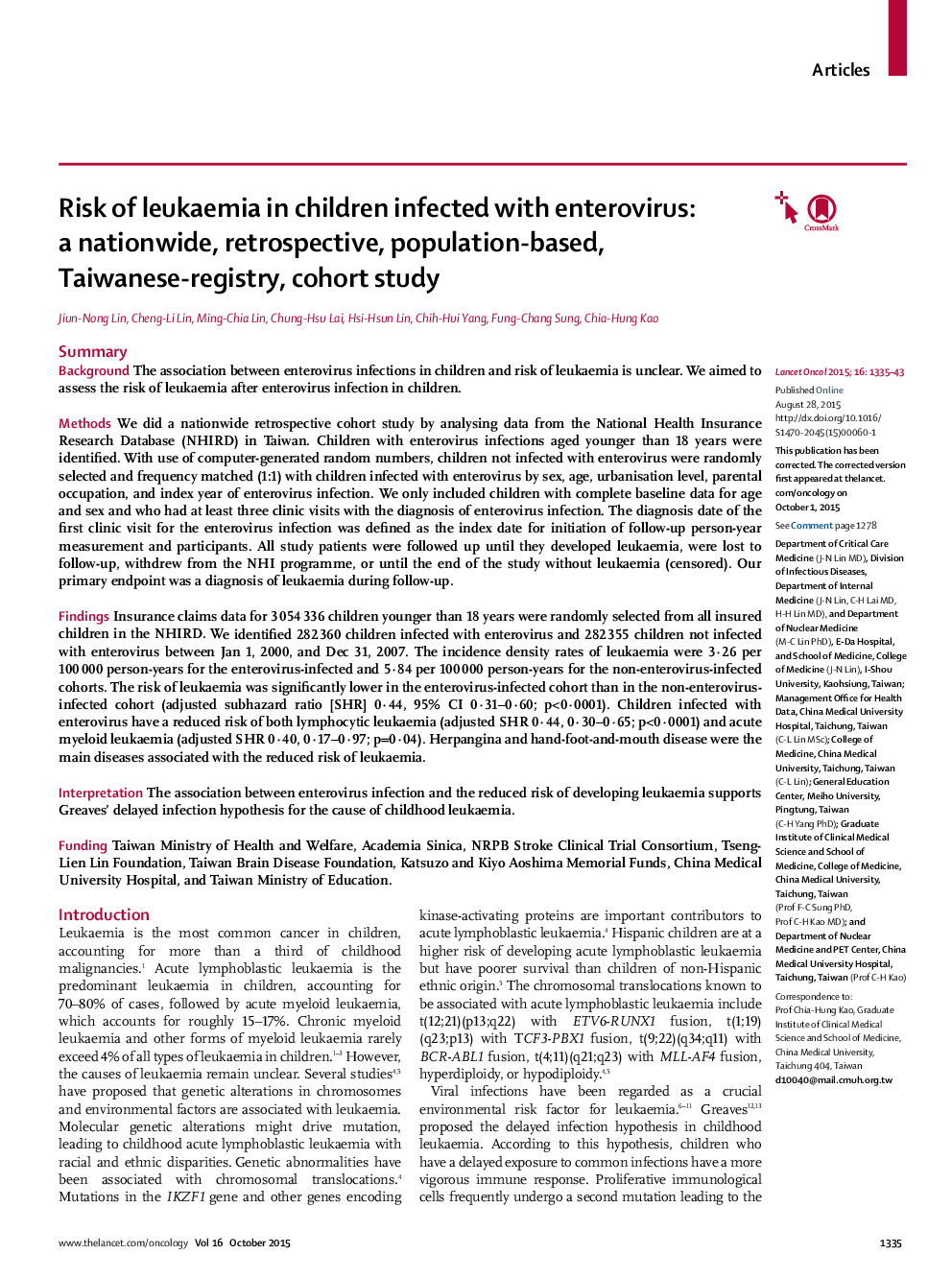| Article ID | Journal | Published Year | Pages | File Type |
|---|---|---|---|---|
| 3993631 | The Lancet Oncology | 2015 | 9 Pages |
SummaryBackgroundThe association between enterovirus infections in children and risk of leukaemia is unclear. We aimed to assess the risk of leukaemia after enterovirus infection in children.MethodsWe did a nationwide retrospective cohort study by analysing data from the National Health Insurance Research Database (NHIRD) in Taiwan. Children with enterovirus infections aged younger than 18 years were identified. With use of computer-generated random numbers, children not infected with enterovirus were randomly selected and frequency matched (1:1) with children infected with enterovirus by sex, age, urbanisation level, parental occupation, and index year of enterovirus infection. We only included children with complete baseline data for age and sex and who had at least three clinic visits with the diagnosis of enterovirus infection. The diagnosis date of the first clinic visit for the enterovirus infection was defined as the index date for initiation of follow-up person-year measurement and participants. All study patients were followed up until they developed leukaemia, were lost to follow-up, withdrew from the NHI programme, or until the end of the study without leukaemia (censored). Our primary endpoint was a diagnosis of leukaemia during follow-up.FindingsInsurance claims data for 3 054 336 children younger than 18 years were randomly selected from all insured children in the NHIRD. We identified 282 360 children infected with enterovirus and 282 355 children not infected with enterovirus between Jan 1, 2000, and Dec 31, 2007. The incidence density rates of leukaemia were 3·26 per 100 000 person-years for the enterovirus-infected and 5·84 per 100 000 person-years for the non-enterovirus-infected cohorts. The risk of leukaemia was significantly lower in the enterovirus-infected cohort than in the non-enterovirus-infected cohort (adjusted subhazard ratio [SHR] 0·44, 95% CI 0·31–0·60; p<0·0001). Children infected with enterovirus have a reduced risk of both lymphocytic leukaemia (adjusted SHR 0·44, 0·30–0·65; p<0·0001) and acute myeloid leukaemia (adjusted SHR 0·40, 0·17–0·97; p=0·04). Herpangina and hand-foot-and-mouth disease were the main diseases associated with the reduced risk of leukaemia.InterpretationThe association between enterovirus infection and the reduced risk of developing leukaemia supports Greaves' delayed infection hypothesis for the cause of childhood leukaemia.FundingTaiwan Ministry of Health and Welfare, Academia Sinica, NRPB Stroke Clinical Trial Consortium, Tseng-Lien Lin Foundation, Taiwan Brain Disease Foundation, Katsuzo and Kiyo Aoshima Memorial Funds, China Medical University Hospital, and Taiwan Ministry of Education.
